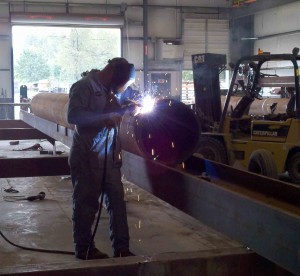Thu 16 Sep 2010
Welding fume assessment
Posted by admin under Hexavalent chromium, Lead, MSDS, Noise, Welding
Comments Off on Welding fume assessment
 Some workers were performing MIG (gas metal arc) welding and subarc welding. This is a daily task and their employer requested that we measure the air – as a general assessment tool. In other words, employee’s weren’t concerned, and no one was complaining, but they wanted to explore further into this aspect of their employee’s health and wellness.
Some workers were performing MIG (gas metal arc) welding and subarc welding. This is a daily task and their employer requested that we measure the air – as a general assessment tool. In other words, employee’s weren’t concerned, and no one was complaining, but they wanted to explore further into this aspect of their employee’s health and wellness.
We performed air monitoring and analyzed as a welding fume profile which is a number of commonly found welding metals including:
- Antimony

- Beryllium
- Cadmium
- Chromium
- Cobalt
- Copper
- Iron Oxide
- Lead
- Manganese
- Molybdenum
- Nickle
- Vanadium
- Zinc Oxide
Along with the welding fumes, we ran a sample for hexavalent chromium using OSHA Method ID215.
Nowhere in the MSDS (material safety data sheet) did it list “chromium” in the material make-up. However, knowing that it could be a trace metal it might be an issue. MIG welding (in general) isn’t typically of high concern for this hazard. And, as it turns out, the results were found to be below their respective limits.
Employees were not welding the entire day. At least half of the time was spent fitting, moving, tacking, remeasuring, and gathering materials. Noise was a big issue as well. Most of the day it was quiet, but when the steel would drop, or an “adjustment” to the metal was needed…it was usually followed by a hammer-bang. Honestly, without the ear plugs, it scared me.
No Responses to “ Welding fume assessment ”
Sorry, comments for this entry are closed at this time.